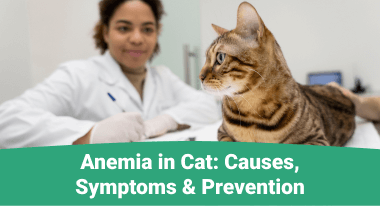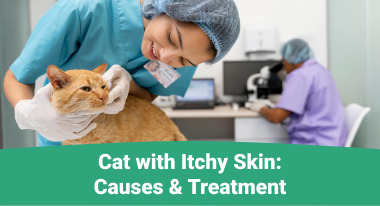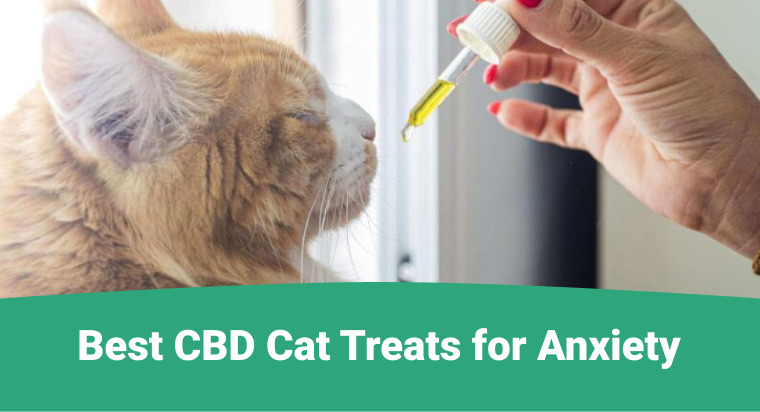Table of Contents
In both young and senior cats, dental disease is an ailment that is a matter of concern among cat parents. Up to 85% of cats over the age of three have some form of dental disease. The most common diseases witnessed among the felines are Gingivitis, periodontal disease- which is a progression from Gingivitis, and tooth resorption- also known as feline oral resorptive lesions or cervical neck lesions.
Dental illness in your feline friends can be excruciatingly painful and even fatal for their health. In general, felines can spend anywhere from 10-15% of their time grooming themselves. When cats undergo tooth pain or dental problems, they groom less, leading to an unkempt coat.
In this article, we’ve discussed the most prevalent dental issues seen among cats and shared insights on the causes of dental problems among felines. You can also glance through the infographic added to understand the topic better.

What Are Some Common Feline Dental Diseases?
Dental ailments are observed in a different form in cats:
#1. Periodontal Disease
Periodontal disease is among the most common dental ailments in felines friends. It is a continuous and progressive disease process that results in inflammation of the tissues surrounding the teeth. Periodontal diseases like Gingivitis cause inflammation of the gingiva.
Severe Gingivitis is frequently seen in cats with vast amounts of plaque and calculus on their teeth. To treat severe Gingivitis, you should immediately consult the vet. It usually requires a general anesthetic to carry out a scale and teeth polish to treat the ailments.
#2. Tooth Resorption
Resorptive lesions can occur at any age to your pet, and any breed of felines can suffer from this dental disease. There are primarily two tooth resorptions, i.e., Type I and Type II. In Type I resorption, the tooth structure remains intact with tooth defects within the crown and root. To cure this dental ailment, the vet opted for surgical extraction. In Type II tooth resorption, the tooth root is replaced with bone. Treatment for Type II tooth resorption often includes coronectomy or crown amputation.
#3.Stomatitis
Stomatitis is an extremely painful oral ailment in cats. Stomatitis causes inflammation of the oral cavity; felines also can suffer from a condition known as lymphocytic plasmacytic gingivostomatitis complex (LPGC) or chronic gingivostomatitis. In this condition, the inflammation spreads from the gingiva to other areas of the mouth; most often, it is seen to spread into the back of the mouth or any part of the mouth.
#4. Feline Resorptive Lesions Or FRLs
FRLs are prevalent in both young and old cats, which causes erosion in the tooth. This ailment forms around the gum line or it is also seen to be formed below the gum line in some cats. It can be diagnosed with dental X-rays or a vet probing the teeth under general anesthesia. If FRLs are left untreated, it causes erosion of the tooth to the point where the crown will fracture off, leaving the root behind.
What Causes Dental Problems In Cats?
In cats’ mouths, there are around 400 different kinds of bacteria. These bacteria digest the remaining food particles in the mouth, especially after meals, and they begin to create a biofilm on the tooth. Brushing regularly aids in the removal of biofilm.
The biofilm that forms on top of cats’ teeth hardens and becomes plaque. Dental illness in cats is frequently connected with the collection of dental plaque (as a result of germs in the mouth) and tartar formation, which can lead to a condition known as ‘periodontal disease’ that affects the teeth and the surrounding structure.
The plaque layer is not immediately apparent, but it can be seen by staining the plague film with a ‘disclosing solution.’ It can appear on the tooth surface as a soft, gray, or white film as it thickens. Plaque is critical since it is the most prevalent cause of dental disease. Taking your feline friend for a routine oral-health check-up is necessary to minimize dental plaque formation and is crucial in preventing dental disease in cats. Plaque can harden if it is not disturbed due to the accumulation of chemicals such as calcium in the plaque layer.
Dental’ tartar’ or ‘calculus’ is hard, calcified plaque, another reason for dental disease in cats. Tartar appears as a hard coating on the tooth surface that is cream/yellow or brown in color. A substantial quantity of tartar can form on the tooth’s surface in extreme circumstances. Because tartar is so hard to remove, basic procedures like cleaning the teeth are typically ineffective, and dental scaling (done by your veterinarian under anesthetic) is frequently necessary.
Dental disease can impact the quality of life of your feline friends. However, sometimes many cats do not show any detectable signs. Hence, a routine oral examination is advisable, as the general anesthetic with intraoral radiographs is vital to detect hidden ailments.
Do You Know The Signs of Dental Problems In Your Pet?
Some felines show signs such as pawing, head shaking, or jaw chattering. You also can witness your cat’s saliva may contain blood; Halitosis is also a common sign. Let’s scroll to the lists of the sign through which you can get an insight if your felines friend needs to visit a vet dentist immediately:
- Bad Breath Or Halitosis
In contrast to normal breath, a strong mouth smell suggests that something is wrong with your cat’s oral health. Periodontal disorder, tooth resorption, infection, cancer, or any types of oral, tooth, or gum issues, all of which are likely to cause pain, can all cause foul breath in your cat.
- Dysphagia Or Difficulty Eating
You can be witnessing indicators of a cat in discomfort if you see your cat chewing on only one side of their mouth, avoiding dry cat food, dropping food from their lips while eating, or vomiting unchewed food.
- Drooling Or Ptyalism
In cats, drooling while eating might indicate dental issues. Gingivitis, cervical line lesions, or any other type of oral discomfort can cause drooling in cats.
- Chattering
When the jaw shakes or quivers, this is referred to as chattering. It’s most commonly seen in cats with resorptive lesions on their teeth as a dental symptom. This painful disorder creates cavities in the teeth, eats away at the teeth, or transforms the tooth roots into bone. When a cat eats, wipes their face, or groom, they usually chatter. Chattering in your cat’s mouth is never natural and always suggests that something is hurting in his mouth.
Dental Diseases In Cats: What Behavioral Changes Are Seen?
- Teeth Grinding or Excessive Yawning
If your cat’s oral pain is severe enough, he or she may have trouble closing their mouth. Excessive yawning or teeth grinding may develop as a result of this.
- Head shaking or tilting
While head shaking and tilting are often connected with ear problems, a cat suffering from dental illness may also shake their head excessively or tilt its head to the side of the mouth where the problem is present. If you witness the head shaking along with drooling or any symptom on this list, dental issues may be the most common cause of such behavior.
- Decrease in Self-Grooming
When a cat isn’t feeling well, he or she will cease grooming. Gingivitis and other dental disorders in cats can make grooming difficult, so if your cat isn’t grooming as regularly as usual, or if their coat seems oily, flaky, matted, or untidy, it’s time to schedule an appointment with a nearby veterinarian for an examination.
- Timidness Or Aggressiveness
When a cat is caressed on the head or scratched on the chin, resorptive lesions and Gingivitis can be excruciatingly painful, causing it to become timid or aggressive.
Growling, aggression, hiding, and avoiding people are all examples of changes in your cat’s regular behavior. If your cat attacks you suddenly when you attempt to stroke their face; that atypical aggressive behavior might be a reaction to discomfort caused by dental pain.
Final Thought!
Many pet parents are unaware that their cats are suffering from mouth discomfort; they just notice that their cats aren’t acting like themselves. That’s why, in addition to routine cat dental care and yearly dental checks by your veterinarian, paying attention to your cat’s behavior and habits is critical for maintaining your cat’s oral health. You can book an appointment with a nearby vet to make yourself aware of how to take care of your feline friend’s oral health.
Disclaimer: The content on the site is for educational purposes only, and it does not provide medical advice. The shared information must not be treated as a substitute for or alternative for medical practitioner advice, diagnosis, or treatment. Regarding any concerns about your pet’s health, seeking veterinary guidance is of utmost necessity. Each pet has specific health, fitness & nutrition needs. Do not disregard, avoid or delay pet health-related advice from veterinarians based on reading the information provided on this site.



